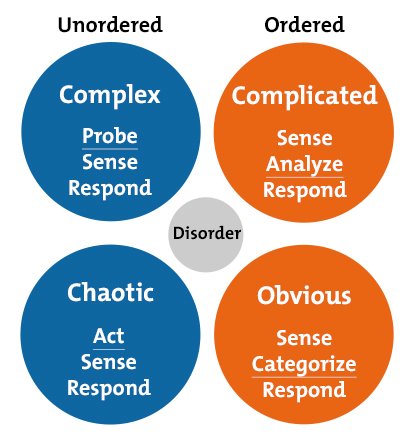
-
We are often asked the question, whose responsibility, is it? In our newsletters over the next few months, we will be offering a series on “Whose responsibility, is it?”
-
We are often asked the question, whose responsibility is it? In our newsletters, we are offering a series on “Whose responsibility, is it?” Last month we focused on the responsibility of the Board, today we focus on Senior Staff Members.
-
The Board should provide effective governance when developing and implementing a plan to protect the vulnerable sector that the organization serves. This includes having clear and compelling documents concerning the structure, operations, and beliefs consistent with safeguarding children, youth, and vulnerable adults.
-
When Did Accountability Become a Four-Letter Word?
Leaders Holding Team Members Accountable December 9, 2021When did policies become a thing to be broken?
When were policies ever communicated that they were only guiding principles, or for that matter, suggestions to be broken?
Why do we laugh at the phrase, "It is better to say you are sorry than to ask permission?
According to Terry Carter, Carter's Professional Association, "Board members should be aware that they could be exposed to personal liability if they permit their organization to work with children or other vulnerable persons where the board has failed to implement an appropriate abuse prevention policy that has been customized to reflect the specifics of their organization. Failure to follow the protocol set out in the abuse prevention policy could also lead to liability, so it's important that an organization that has the foresight to implement a policy also makes sure the policy is strictly followed."
I am a bit stymied by a change I have observed over the last decade that challenges the rights of Board members, leaders, and employers to hold individuals accountable for their actions when there is a contract, Code of Conduct, and policies in place. I have heard stories from many leaders who say they are experiencing increased anxiety, spending an inordinate amount of their time reminding personnel of policies and procedures that have been willfully broken.
-
Best practices are ideal for the simple design of a program or an event. We are all aware though that when caring for the vulnerable, a program is seldom simple, rather, as we learn in the Cynefin Framework, we often find ourselves in complicated or complex situations where best practices do not fit the scenario.
I remember a time when a youth pastor called me, frustrated as he was driving to a youth event and there was a lightning storm outside. He saw one of his students walking to the event fighting off the rain and wind and subject to lightning. He was facing a complex situation where he had to either leave the student to nature or break policy and forego the best practice of never driving a student alone in the car. At times like this, we want to buy-in to the myth that Plan to Protect® doesn’t work in complicated and complex situations. However, if you have heard me teach, you know I often speak of good, better, best and bad.
-
Source: with permission: https://telioslaw.com/blog/ten-ways-land-court-over-sexual-harassment
Harvey Weinstein, Matt Lauer, Al Franken—and the list goes on. High-profile sexual harassment allegations have shaken up Hollywood, the media, and politics. But don’t think that this trend is confined to celebrities. They are not the only ones who can, and do, abuse power. Sexual harassment by employees, if not dealt with swiftly, can create a toxic work environment as well as land even small organizations in hot water. In light of this timely topic, here are ten easy ways to end up in court over sexual harassment. Topics in this “what not to do” list are examples taken from actual cases.
Before diving into this list, it is important to remember when organizations can be held legally liable for sexual harassment that happens to their employees. A key defense exists to sexual harassment liability for organizations, called the Faragher/Ellerth defense. In order to take advantage of this defense, an organization must prove “(a) that the employer exercised reasonable care to prevent and correct promptly any sexually harassing behavior, and (b) that the plaintiff employee unreasonably failed to take advantage of any preventative or corrective opportunities provided by the employer or to avoid harm otherwise.”1 With that in mind, let’s dive into the list, as many of these easy ways to fail are ways to lose this defense.
-
“Female karate teacher sends nude photos to 11-year-old student and invites him over to her house for sex.”
“Youth pastor accused of sending sexual texts to 15 year old.”
“Camp Director sends inappropriate snapchat messages to campers.”
“Teacher sentenced for texting student thousands of times.”
...
-
Can We Use Restraints?
What do we do if parents/guardians request compression hugs or restraints for their loved ones? October 31, 2019This article was originally printed in the spring winter issue of PROTECT .
Physical restraints have long posed an ethical dilemma in mental health services in North America. On one hand, they help prevent self-injury or harm to others. On the other, they can increase agitation, confusion, and distrust due to their coercive nature. What... -
According to the Merriam-Webster Dictionary, the definition of high risk is: likely to result in failure, harm or injury or more likely than others.
When assessing the risk level of an activity, assess the severity of the harm, injury or abuse: whether it is trivial (little to no effect), minor (requiring first aid), moderate (sprains,...
-
For the past six summers, I have been the Sports Camp Coordinator for a week-long day camp. Each year, we have approximately 60 campers ages 7 to 12 years old participating in various sports, including soccer, ball hockey, basketball, volleyball, as well as many large group games – all on varying terrain. With the heightened...








